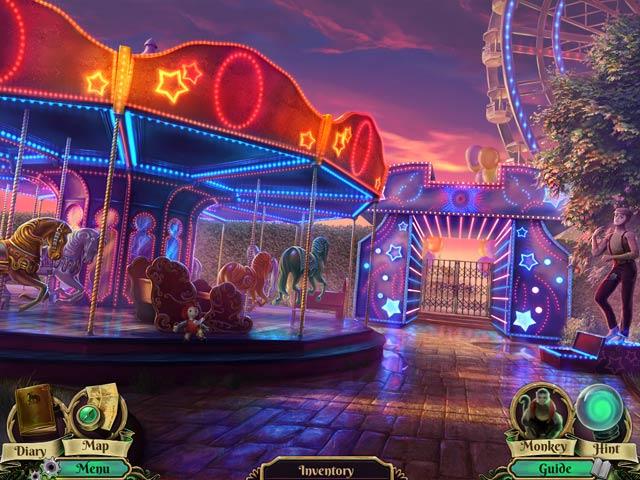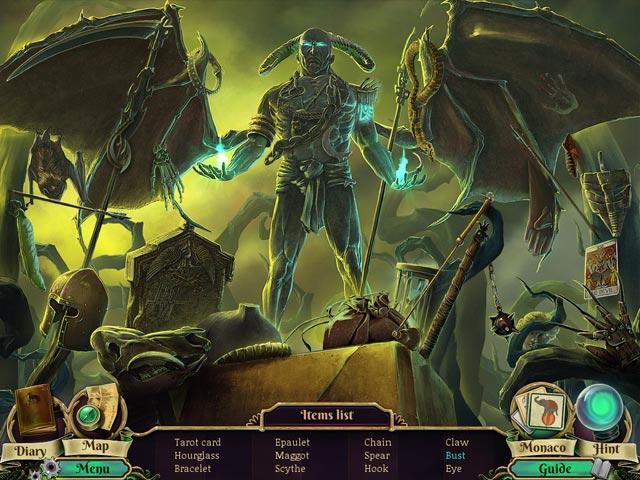- Wondering how to get Monopoly GO! free rolls? Well, you’ve come to the right place. In this guide, we provide you with a bunch of tips and tricks to get some free rolls for the hit new mobile game. We’ll …
Best Roblox Horror Games to Play Right Now – Updated Weekly
By Adele Wilson
Our Best Roblox Horror Games guide features the scariest and most creative experiences to play right now on the platform!The BEST Roblox Games of The Week – Games You Need To Play!
By Sho Roberts
Our feature shares our pick for the Best Roblox Games of the week! With our feature, we guarantee you'll find something new to play!All Grades in Type Soul – Each Race Explained
By Adele Wilson
Our All Grades in Type Soul guide lists every grade in the game for all races, including how to increase your grade quickly!
Dark Arcana: The Carnival Review
The haunted, dark carnival has become a fairly standard setting within the hidden object genre, but Dark Arcana: The Carnival is proof that it can still feel fresh and gripping. The game’s storyline starts off slowly with a standard case of a missing person, but quickly changes focus to become one of lost lovers, dark rituals and evil forces bent on destroying the world. With each plot twist, the game becomes even better than before, but it isn’t without a few technical issues.

Welcome to the spooky carnival. I recommend avoiding the cotton candy.
The haunted, dark carnival has become a fairly standard setting within the hidden object genre, but Dark Arcana: The Carnival is proof that it can still feel fresh and gripping. The game’s storyline starts off slowly with a standard case of a missing person, but quickly changes focus to become one of lost lovers, dark rituals and evil forces bent on destroying the world. With each plot twist, the game becomes even better than before, but it isn’t without a few technical issues.
Dark Arcana: The Carnival follows a detective, brought to a fairly rundown carnival to conduct a search for a woman that went missing in the carnival’s dark house. Early on in your investigation, it becomes clear that supernatural forces are at play here, and that the carnival’s manager is likely to blame. With each clue you uncover, the master plan becomes more and more clear: The manager wishes to resurrect his dead lover, and a powerful evil force is pulling the strings from somewhere within the Mirror World, an alternate version of reality where vines and living skeletons are allowed to run wild.
While the settings within the “normal” world are fairly standard – an old ferris wheel, a few midway games, a carousel, etc. – these are given a facelift within the mirror world, as the game’s color palette completely changes from one of dark shadows against neon lights to one with a mist in the air and a green hue covering the world. You’ll complete hidden object scenes in both of these versions of reality, but unfortunately, many items return on subsequent playthroughs of a single scene, and you may be forced to find many of the same objects multiple times just to find key objects.
While this isn’t a major issue, the interactive scenes are incredibly easy to complete to begin with, so seeing items reappear in the same locations when you return to the scenes just makes them even easier still — and a bit boring. If you do happen to have trouble finding items within these scenes, you can ignore the hint meter altogether and jump into a card game called Monaco. This card game requires you to make matches of two cards that contain the same symbols that are also touching in some way (horizontally, vertically or diagonally). If you make a match with a symbol that has a colorful background, one of the hidden objects will be removed from the list. In this way, you can easily swap back and forth between the scenes and Monaco and never truly get “stuck.”
As you collect key items from each of these scenes, you’ll combine them with a few items that you find in the environments to complete a variety of puzzles, ranging from tile swapping and rope untangling puzzles to a few that are more unique. For instance, you may be required to line up symbols based on their associations with one another (a bird matches with a feather, for instance), or you may be forced to manipulate a jukebox by determining a code based on the jukebox’s most popular songs. These puzzles tend to be as easy to complete as the rest of the game, but you can choose from multiple difficulty levels to give yourself a challenge.
Throughout it all, you’ll have a helper monkey that can climb to high areas and retrieve items that you wouldn’t be able to claim otherwise, but this monkey is just one example (the worst example) of the game’s sloppy character models. In the case of talking characters, the mouth animations don’t come even close to matching the voice-overs, and many are blurry, with skewed proportions or textures. While the game contains a map that marks active locations, backtracking also becomes a major issue towards the end of the game, as the map doesn’t offer a fast-travel option.
Even with these problems, the twists and turns of the game’s storyline will likely keep you moving ever forward to find out what happens next. While the gameplay is so simple that you might not ever really need to use the map, the fact that it’s there is appreciated, as are the multiple journal entries and letters that you can find scattered around the world to further flesh out the story. It would have been nice to see more attention placed on the character models throughout the main game and the collector’s edition bonus chapter, but as it stands, both are worthwhile gameplay experiences for any fan of solid hidden object play.

The good

The bad
More articles...
Monopoly GO! Free Rolls – Links For Free Dice
By Glen Fox
Wondering how to get Monopoly GO! free rolls? Well, you’ve come to the right place. In this guide, we provide you with a bunch of tips and tricks to get some free rolls for the hit new mobile game. We’ll …Best Roblox Horror Games to Play Right Now – Updated Weekly
By Adele Wilson
Our Best Roblox Horror Games guide features the scariest and most creative experiences to play right now on the platform!The BEST Roblox Games of The Week – Games You Need To Play!
By Sho Roberts
Our feature shares our pick for the Best Roblox Games of the week! With our feature, we guarantee you'll find something new to play!All Grades in Type Soul – Each Race Explained
By Adele Wilson
Our All Grades in Type Soul guide lists every grade in the game for all races, including how to increase your grade quickly!








 “
“